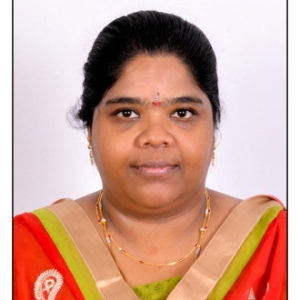Title : Novel chromogenic method as a sensitive technique in estimating analytes
Abstract:
To develop and validate a simple and sensitive UV spectrophotometric method for Quantification of Hesperidin in bulk and Ayurveda formulation including plant extracts using chromogenic compound Gibb’s reagent (2, 6-Dichloro quinone 4-Chloroimide). Chromogenic method was developed in visible region by using GIBBS Reagent. Hesperidin reacts with Gibb’s reagent and 0.01N sodium hydroxide solution (Adjusted to pH 9 with dilute HCL) to produce blue colour complex.
The reaction between a chromogenic reagent and a drug is often specific to certain functional groups or chemical structures, allowing for selective detection and measurement. Gibb’s reagent chiefly utilized for the identification and determination of phenols, unsubstitued and p-alkoxy phenols. which is measured at 500–670nm. Hesperidin is a category of bioflavonoid (Flavonoid-7-o-glycosides), is isolated from citrus fruits. It is used for blood vessel conditions such as hemorrhoids, varicose veins.
For the spectrometric analysis of Hesperidin using an ELICO SL210 UV-Visible spectrophotometer with spectral treats software in accordance with International Council for Harmonization (ICH) guidelines Q2(R1), the 613nm wavelength absorbance was considered the primary maxima given improved reproducibility for further dilutions at that wavelength. The method was then validated using validation parameters such as linearity, range, precision, accuracy, ruggedness and robustness as stipulated in ICH guidelines. Linearity was well demonstrated for a concentration series of 2μg/ml to 40μg/ml, with a linear regression coefficient (R2) of 0.9999 observed. The %RSD of the precision was observed to be in limits <2%. Accuracy was found to be 98-99% within limits. LOD and LOQ were found to be 0.21318µg/ml and 0.64601µg/ml respectively. The Liquid-Liquid extraction method was used to design, validate, and expand the improved procedure to biological material.
Keywords: Hesperidin, Gibb’s reagent, UV-Visible spectrophotometer, Ayurvedic Formulations
Audience Take Away Notes:
- The ability to quantify hesperidin using Gibbs reagent equips the audience, whether they are manufacturers, researchers, healthcare practitioners, or consumerswith critical information to enhance formulation quality, the exact amount of hesperidin allows practitioners to optimize dosages in formulations. Drive research advancements, and make informed health-related decisions
- This provides students with practical examples of analytical techniques and their applications in pharmaceutical and herbal product development
- For manufacturers, accurate quantification of hesperidin ensures that their products meet regulatory standards and quality specifications
- It helps in maintaining consistency across batches, which is crucial for product efficacy and consumer satisfaction. This knowledge enables them to adjust formulations as needed to achieve desired hesperidin levels, thereby optimizing the therapeutic benefits of their products
- Researchers and Scientists benefit from quantification data to study the pharmacological effects, bioavailability, and potential synergistic effects of hesperidin in various formulations and plant extracts. This knowledge contributes to advancing scientific understanding and may lead to the development of new formulations or therapeutic applications
- Research on Hesperidin quantification using Gibbs reagent has the potential to inspire Research collaboration, Faculty members specializing in related fields such as analytical chemistry, natural products chemistry, pharmacognosy, or phytochemistry could collaborate to further explore different aspects of hesperidin quantification
- This could include refining analytical methods, exploring its presence in various plant species, or investigating its stability under different storage conditions.enrich teaching curricula, foster student engagement in research, and contribute to the advancement of knowledge in both basic and applied sciences. It serves as a foundation upon which other faculty members can build to expand their research agendas and educational offerings
Other benefits:
- Advancement of Scientific Knowledge
- Application in Herbal Medicine and Ayurvedic Formulations
- Potential Health Benefits
- Interdisciplinary Collaboration
- Commercial applications in the pharmaceutical, nutraceutical, and herbal product industries. Companies can use this information to develop standardized herbal extracts or improve existing formulations based on scientific evidence



